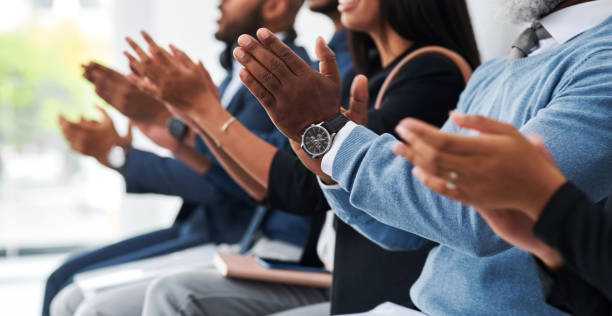Except for infants, it is not clear if there is any human who has never clapped – by hitting their hands together.
“So, what’s so special about ordinary clapping?” Someone may ask. It is indeed special, as a matter of fact if you have never taken your clapping seriously, start doing so henceforth, because you will be doing yourself a service in the process.
Let’s consider how special clapping could really be and how it is capable of making your health better. Clapping is the motion of bringing your palms together quickly and forcefully thus creating ordinary sound or a rhythmic sound in a repetitive manner.
You can see that, in one way or the other, we get to clap each day without even attaching any importance or health benefit to it, let alone looking at it as an exercise. Before reading this article, talking on a general note now, many may tend to argue that: ‘If by any chance clapping is an exercise, then ‘It must be a mere exercise of the hands.’ Do you agree to this assertion? I guess your answer is an emphatic ‘Yes,’ but we will here and now be learning perhaps for the first time that it is far more than that. Let’s go!
Now, the question would then be: ‘What benefits does clapping bring to our health?’ and what disease type(s) does it curb?
How Clapping Exercises Help Combat Diseases
Cardiovascular Health
Studies have shown that our palms have links to our heart function and clapping activates these acupressure points thus improving blood circulation and regulating blood pressure. By doing so it reduces the risk of cardiac anomalies and enhances oxygen delivery to various organs of the body.
Boosts Immune System
Seasonal infection prevention is preventable through clapping. Do you know that regular clapping stimulates white blood cell production, strengthening immunity against infections.
Supports Your Respiratory System
Clapping has the potential of strengthening chest muscles and improves respiratory function, offering relief for asthma by stimulating nerve endings connected to the lungs.
Musculoskeletal Benefits
It helps to reduce back pain (middle/lower) and arthritis by activating acupressure points linked to the spine and joints, giving the needed relief.
Promotes Mental Health
The rhythmic motion reduces stress and anxiety by releasing endorphins and promoting mood stability and consequently your mental health.
Additional Benefits
– Hair health: Improved circulation stimulates follicle growth. One can then say, if you care about your hair, clap more.
– Reduces Inflammation: Clapping has the potential of reducing kidney-related inflammation.
Cognitive function
Clapping enhances focus, memory, and handwriting in children. Isn’t that amazing to know? It is time to instruct our school children to make it a point of duty to clap rigorously when the opportunity presents itself in class.
This article is incomplete if you do not have the following additional information:
1. Coconut Oil & Clapping: For optimal results, apply oil (e.g., coconut) to palms and practice 20–30 minutes daily
2. Developmental delays: If a child fails to clap, wave, or point by 12–15 months, consult a pediatrician to assess for conditions like Rett syndrome or motor issues.
3. Clapping should Never Replace Medical Consultation: Clapping is very good but medical emergencies or chronic symptoms require professional evaluation.
How to Incorporate Clapping into Your Daily Life
1. Daily Clapping: It will be good to set aside a few minutes each day to clap, either on your own or with others.
2. Clapping during Meditation: ‘I thought meditation is supposed to be done quietly,’ you may be tempted to ask but incorporating clapping into your meditation at some point in the practice especially before you begin the meditation will help promote relaxation and balance. Whether before, mid-way or towards the end of your meditation, the point is: ‘It helps!’
3. Clap with music: One of the easiest way to incorporate clapping into your daily life may be through music. Yes, music! It will be nice to clap along to a music that inspires and uplifts you. That way, you would have fulfilled your clapping obligation for the day, that is, if it is what you want to accomplish daily.
4. Teach others to clap: Teaching clapping with demonstration is beneficial to the person teaching it and the learners. Share the benefits of clapping with others and encourage them to incorporate it into their daily lives.
Remember, clapping is a simple yet powerful tool that can have a significant impact on both your physical and emotional health.
While evidence is largely anecdotal, clapping offers a low-cost, accessible adjunct to traditional therapies.





